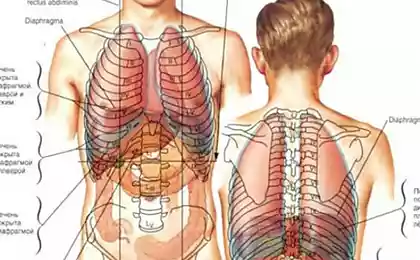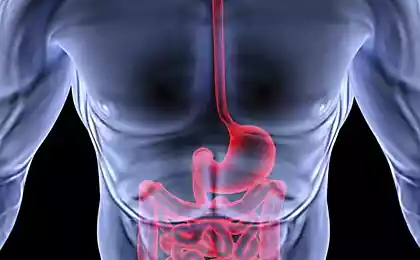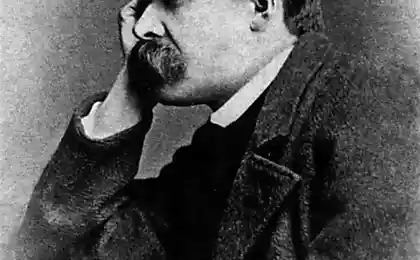240
7 Signs You’re Overflowing With Negativity and It’s Time to Get Rid of It

Negative creeps up unnoticed. Day after day, negative emotions accumulate, gradually becoming part of our daily lives. We become so accustomed to their presence that we cease to notice how they transform our perception of the world and our relationships with others. Recognizing the moment when the negative takes over the positive can be difficult. However, there are clear signs that the inner reservoir is overflowing with toxic emotions, and it’s time to take drastic measures to restore emotional balance.
According to research in the field of positive psychology, chronic being in a state of negativity leads to a significant decrease in the quality of life. American psychologist Barbara Fredrickson found that to maintain psychological well-being requires a ratio of positive and negative emotions at least 3:1. When the balance is disturbed, a person is in a dangerous zone of emotional burnout.
1. Constant criticism and dissatisfaction with others
The first and most noticeable sign of an internal accumulation of negativity is an increased propensity for criticism. If you find yourself constantly looking for flaws in other people and situations, it’s a serious signal of a problem. It is especially revealing when discontent is directed at loved ones who seemingly do nothing extraordinary to elicit such a reaction.
Practical recommendation: Enter the practice of “gratitude” into your life. Write down at least three positive things that happened each day. Studies show that this technique helps to redirect attention from negative aspects to positive ones, gradually changing the overall emotional background.
2. Chronic fatigue and decreased energy
Negative is an energy vampire. It imperceptibly drains the vital forces, leaving a person in a state of constant fatigue. Physical fatigue without objective reasons, especially after socializing with others, can indicate an excess of negative emotions that require significant energy expenditures to support themselves.
430173
A study published in the journal Frontiers in Psychology in 2021 found that people prone to rumination experienced 47 percent more symptoms of physical fatigue compared to those able to let go of negative thoughts.
How to restore energy
- Incorporate short mindfulness meditations (5-10 minutes) into your daily routine.
- Practice physical activity – it stimulates the production of endorphins, natural antidepressants.
- Ensure full sleep – at least 7-8 hours a day.
When a person is overwhelmed with negativity, their ability to see perspective is greatly reduced. The future is bleak and positive scenarios seem unlikely. If you find yourself constantly expecting the worst outcome, it’s a clear sign of emotional imbalance.
The man who sees only black or white misses the richness of the whole spectrum of life in between. Martin Seligman, founder of positive psychology
Practical recommendation: Use the “cognitive reassessment” technique. When a negative prognosis arises, ask yourself: “What evidence do I have that this will happen?”, “Has my negative prognosis ever happened?”, “What alternative, more positive scenarios are possible?”
4. Physical manifestations of stress and anxiety
Our body is a sensitive indicator of emotional state. The excess of negativity inevitably manifests itself on a physical level. Frequent headaches, sleep disorders, digestive problems, muscle tension, especially in the neck and shoulders – all this can be the result of chronic stress caused by the accumulation of negative emotions.
According to the American Psychological Association, about 77% of adults regularly experience physical symptoms caused by stress. However, only 28% are aware of the connection between their emotional state and physical manifestations.
Techniques to relieve body tension
- Progressive muscle relaxation – consistent tension and relaxation of muscle groups.
- Deep diaphragmatic breathing – 5-7 cycles of deep breathing can significantly reduce stress levels.
- Regular yoga or tai chi practices combining exercise with breathing techniques.
Overflow of negativity inevitably affects the quality of interaction with others. You may notice increased irritability, a desire for isolation, a decrease in empathy and understanding of other people. When you overreact to neutral comments, it can be an indication of an internal imbalance.
Studies show that negative emotions are “contagious” – the phenomenon of emotional contagion works both positively and negatively. One person experiencing chronic discontent can reduce the emotional background of the whole group by 30-40%.
6. A fixation on the past
Constant return to negative events of the past, reliving old grievances and conflicts is a clear sign of internal imbalance. If you notice that in your internal dialogue, thoughts about “how would it be if ...” regularly pop up, this indicates the need for emotional unloading.

Practical recommendation: Try the “forgiveness letter” technique. Write a letter to the person on whom you hold a resentment (or to yourself in the past), expressing all the accumulated emotions. After completing the letter, symbolically destroy it (burn, tear), visualizing how the emotional load disappears along with the physical carrier.
7. Loss of interest in previously enjoyable activities
When negativity becomes the dominant emotion, a person often loses the ability to enjoy the usual joys of life. Hobbies, meetings with friends, previously favorite activities cease to cause enthusiasm. If you notice that you are spending more and more time in a passive state without obvious pleasure, it can be a sign of a serious emotional imbalance.
Neurobiological studies show that chronic stress and negative emotions can temporarily block dopamine receptors, a neurotransmitter responsible for feelings of pleasure and motivation. As a result, a person falls into a vicious circle: negative emotions reduce the ability to enjoy, which in turn increases negative emotions.
How to bring back the joy of life
- Start small and allow yourself little joys every day.
- Experiment with new activities that may spark interest.
- Practice mindful enjoyment – concentrate entirely on the pleasant sensations at the moment they occur.
One of the most effective ways to quickly get rid of accumulated negativity are cathartic practices. They allow suppressed emotions to be released through intense physical expression, bypassing mental blocks and rationalization.
Dynamic Meditation is a powerful technique for releasing accumulated negative emotions. Unlike classical meditation practices based on stillness and silence, dynamic meditation uses active physical movements, breathing techniques, and emotional expression to achieve deep inner purification.
You can try this transformative practice at dynamic-meditation.in.ua, which offers professionally organized sessions under the guidance of experienced instructors.
The Way to Emotional Balance
Recognizing the signs of emotional imbalance is the first and most important step toward restoring inner harmony. It is important to understand that negativity is not you, but only a temporary state that can and should be changed. Modern psychology offers many effective techniques and approaches to transform negative emotional patterns.
Remember that working on yourself is a marathon, not a sprint. Even small but regular steps toward positive change lead to significant results over time. Start today and you’ll be surprised at how much brighter the world around you can be.
Glossary of terms
Rumination
Obsessive thinking about problems and unpleasant situations, mental “chewing” of negative experiences, which does not lead to constructive solutions, but only strengthens and consolidates negative emotions.
Cognitive reassessment
A psychological technique aimed at changing the perception of a situation by reviewing and rethinking its meaning and consequences. It allows you to transform the emotional response to events.
Emotional contagion
The process of unconsciously transmitting an emotional state from one person to another through nonverbal cues, facial expressions, tone of voice, etc.
Mindfulness meditation
The practice of directing attention at the moment without evaluation or judgment. It helps to develop the ability to observe your thoughts and emotions from the position of an unevaluated witness.
endorphins
A group of hormones produced by the body in response to various stimuli, including physical activity. They have a natural analgesic effect and contribute to improving mood.
Progressive Muscle Relaxation
A method of reducing physical and psychological stress, based on consistent tension and relaxation of various muscle groups. It was developed by American physician Edmund Jacobson in the 1920s.
catharsis
A term derived from the Greek word for purification. In psychology, it refers to the process of releasing and reacting repressed negative emotions through their intense expression, leading to emotional relief and purification.
Dynamic Meditation
Active meditative technique developed for modern man, including physical movements, breathing exercises and expressive expression of emotions. It is aimed at releasing repressed emotions and achieving a state of inner silence through preliminary catharsis.
Philosopher-Jumorist: 10 quote Marka Tuvena
What books to read to understand this world. List from Zubarev























